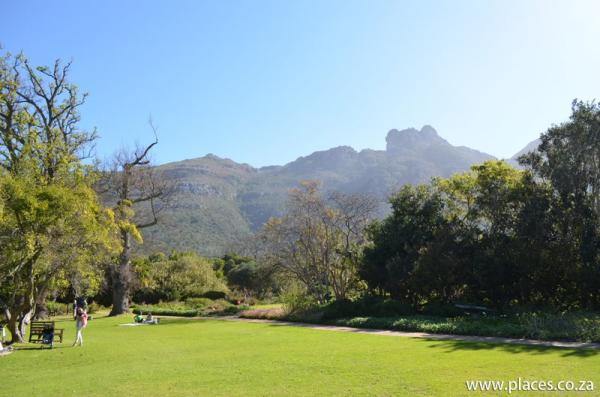

There is a granite Celtic cross in Kirstenbosch marking the grave of the garden's first director, Professor Harold Pearson, and it bears the inscription: 'If ye seek his monument, look around.'
It is an apt and moving injunction - the grave is surrounded by one of the world's most famous reserves of indigenous flora.
Founded in 1913, Kirstenbosch lies on the eastern slopes of Table Mountain. It consists of landscaped gardens of indigenous plants and trees, watered by the Liesbeek River, as well as natural forest that extends up the lower slopes. Kirstenbosch covers an area of 828Ha, 60 ha of which are cultivated; the remainder is a natural flora reserve.
It is a living display featuring 4 700 of the estimated 20 000 species of indigenous South African flora, and close to 50 per cent of the Peninsula's floral wealth. In the cultivated area, related plants are grouped together and radiate from the central lawns like the spokes of a wheel.
Among the interesting sections here are the Cycad Amphitheatre, which hosts most species of these 'living fossils' found in southern Africa; the famed Protea Garden on the higher slopes, with its profuse growth of silver trees (Leucadendron argenteum); the JV Mathews Rock Garden (named after the first curator) containing succulents of the genera Crassula, Aloe, Lampranthus and Euphorbia; the Erica Garden and the Pelargonium Koppie.
Two streams cut through Kirstenbosch, both laced with besembos, red alder and hard fern. Of historical interest is an avenue of camphor trees and fig trees planted by Cecil Rhodes in 1898, and a small section of wild almond ( Brabejum stellatifolium) hedge planted by Dutch settler Jan van Riebeeck in 1660.
Within the grounds of Kirstenbosch are the headquarters of the National Botanical Institute that administers the national network of gardens and associated research institutes. One, the Compton Herbarium, is situated at the top of Camphor Avenue in Kirstenbosch itself. Named after a former director, the Compton Herbarium is dedicated to research, particularly into Cape flora.
It now preserves approximately 250 000 specimens, including its own collection and that of the South African Museum dating from 1825.
All paths in the main section of Kirstenbosch are paved. Smuts Track (used by the late General J C Smuts) leads through the mixed forest of indigenous trees up Skeleton Gorge to the summit of Table Mountain. The other route, Forest Walk, leads through leafy palaces of ironwood, yellowwood and red alder.
There are two special routes along level, paved paths for wheelchairs, prams or the less agile. Known as the Weaverbird Walk and the Silver Tree Stroll, both are clearly signposted with the wheelchair sign. Three trails, Silvertree, Yellowwood and Stinkwood Trails, provide more vigorous walks of up to 6 km or three hours.
The Braille Trail for the blind passes through natural Table Mountain forest and fynbos. The plants are dearly labelled with Braille and large-print labels. The Fragrance Garden, situated nearby boasts a fine collection of indigenous aromatic plants, also labelled in Braille and large print, set out in a number of raised beds.
Kirstenbosch may be visited in spring and summer when the gardens blaze with Namaqualand daisies and other annuals, but winter is the best time to see proteas and ericas.
Visitors may purchase selected indigenous plants, books and souvenirs from the shop and there is a restaurant with an attractive outdoor section.
Tel Information: +27 21 799 8783
Tel Ticket Office: +27 21 799 8782
Tel Garden Office (weekdays only): +27 21 799 8899
Fax: +27 21 797 6570
Email: kirstenboschinfo@sanbi.org.za
Sep - Mar (Summer): Mon - Sun - 08h00 - 19h00
Apr - Aug (Winter): Mon - Sun - 08h00 - 18h00
Conservatory: Mon - Sun - 09h00 - 17h00
Rhodes Drive, Newlands
Cape Town, South Africa
E 1826'06.48" 3359'15.76" S
Long 18.43209
Lat -33.99039
Accommodation in the vicinity can be found in Bishopscourt, Constantia and Newlands.













